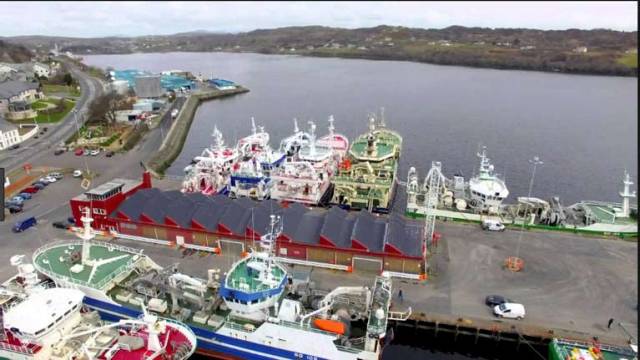A new EU study says that inspection authorities in 15 EU member states are failing to manage engine power as a way of controlling fishing effort writes Lorna Siggins
Physical engine power verifications conducted on board 68 fishing vessels across 14 of the 15 member states surveyed found “misreporting” of engine power to be a “widespread phenomenon within the sample”, the report says.
The report for the EU Maritime Affairs and Fisheries directorate found that “measured” engine power exceeded “certified” engine power during 51 per cent of inspections.
This meant that vessels certified to catch a certain amount of fish were, in theory, able to catch more.
“misreporting” of engine power to be a “widespread phenomenon"
The report also found there were “secondary indications of non-compliance” in some 16 per cent of inspected vessels.
There were “no indications of non-compliance” in some 35 per cent of vessels inspected, the report says.
Engine power is regarded as a good indicator of fishing effort, and also indicates the size of gear that can be towed and speed of same.
The inspectors divided inspections into categories – as in Atlantic pelagic trawlers; bottom otter trawlers in the Mediterranean, Straits of Sicily and the Adriatic Sea; North Sea beam trawlers; deep-sea long-liners off the Azores and Madeira; and Baltic Sea and Cantabrian coast mid-water otter trawlers.
Verifications were conducted in co-operation with, and under the authority of, member state authorities, and were meant to take place on an “unannounced basis”, the report states.
Power was measured with a torque meter using strain gauges installed on a temporary basis at the propellor shaft, in combination with a shaft speed meter.
Several situations were evaluated, including steaming at maximum engine speed, and propellor pitch if applicable; fishing at maximum engine speed or pulling (as in bollard pull) at a maximum engine speed.
In spite of several attempts, the consultants were unable to conduct verifications in Greece.
The report says that authorities in Germany, Ireland and Scotland questioned the authority of their own fishery inspectors to conduct physical engine power verifications.
It also says that member states didn’t have the authority to require co-operation from vessel owners, and this resulted in evasion of control by one vessel in France and contributed to a failure to inspect in Greece.
In Ireland, the inspections took place in Killybegs, Co Donegal, in conjunction with the Sea Fisheries Protection Authority (SFPA) and the Marine Survey Office (MSO).
The report says that “secondary” indicators of non-compliance were detected, and the applied fuel rack sealing of the main enginers onboard one unnamed vessel did not correspond to the de-rated output.
On a second Irish vessel, evidence of tampering with engine settings prior to the physical verification was found, and the master of this vessel refused to operate above 72 per cent pitch.
“An explanation for the fact that only indirect evidence has been found could be that the owners of the vessels were informed about the verification by the local authorities earlier than as agreed with the contractor”, the report says.
In the case of the Spanish fleet, several cases of a “substantial magnitude” of non-compliance were found.
The consultants had been asked to follow up complaints against a segment of the Spanish fleet and one Irish vessel.
The report notes that only 11 of the 15 member states studied for the review have implemented a sampling plan, and five-member states conducted verification only once from 2012 to 2014.
Some six member states selected a sample of vessels for verification of engine power on a recurring basis, as in every six or 12 months.
It says that the certification system needs to be improved across all member states to ensure that the certified engine power at time of installation corresponds with the actual capacity of the engine. Inspections for ongoing compliance also need to be improved, and it suggests several options for this.
Asked to comment, the SFPA that “as part of an EU-wide review, physical engine power assessment verification inspections were conducted onboard fishing vessels in 14 member states including Ireland”.
“The vessels were selected for inspection by EU appointed specialist engine power inspectors,” the SFPA said, and as the national single authority, it assisted the Commission inspection team in co-ordinating inspections in Ireland at their request.
“The verification inspections were undertaken on an unannounced basis and conducted by EU appointed inspectors, accompanied by an inspector from the MSO,”the SFPA statement said.
































































